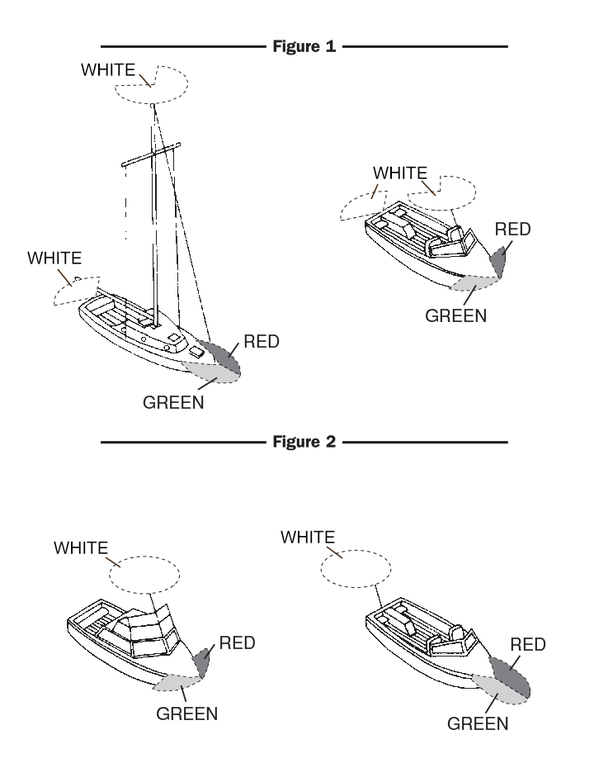Powerboats 26 Feet but Less Than 40 Feet In Length: Required Safety Equipment
Title and Registration Numbers
Title and registration numbers are required.
Personal Flotation Devices
One US Coast Guard approved wearable device is required for each person on board. One US Coast Guard approved throwable device (Type IV) is required on board and readily accessible. Inflatable PFDs are authorized only when used according to the instructions on US Coast Guard approval labels.
Each wearable PFD should be readily accessible, in serviceable condition, and of the appropriate size for the intended user. Wearable devices should also be approved for the activity taking place and used according to the instructions on its label. Learn more about PFD fit and types.
Fire Extinguishers
Either of the following meets the fire extinguisher requirement:
- 2 US Coast Guard-approved type B-1 marine-grade fire extinguishers, OR
- 1 US Coast Guard-approved type B-2 marine-grade fire extinguisher
If a vessel has a fixed fire extinguishing system, that will affect the number and type of fire extinguishers required.
The fire extinguisher must:
- Be readily accessible.
- Be in condition for immediate and effective use at all times.
Visual Distress Signals
Visual distress signals that are US Coast Guard-approved for day and night use are required if operating in coastal waters of the state. Visual distress signals must be readily accessible, in working condition, and unexpired (if expiration date is shown).
Sound-Producing Device
One whistle, horn or other sound-producing device is required. The device must be capable of producing an efficient sound that can signal intentions and position in periods of reduced visibility.
Lights
US Coast Guard-approved red and green side lights and a white all-around light are required when not at dock. White lights shall be visible at a distance of at least two (2) miles. Colored lights shall be visible at a distance of at least one (1) mile. "Visible" when applied to lights means visible on dark nights with clear atmosphere.
The required navigation lights must be equipped as shown in Figure 1 or Figure 2.

US Coast Guard-approved lights must be:
- serviceable,
- displayed from sunset to sunrise in all weather,
- displayed during restricted visibility, and
- visible all around the horizon.
Any other lights on the vessel:
- must not be exhibited in a way that may be mistaken for navigation lights;
- must not impair the visibility or distinctive characteristics of navigation lights; and
- must not interfere with the keeping of a proper lookout.
Ventilation
Ventilation systems are required of all vessels using liquid fuel that is volatile. Vessels that are of "open construction" are exempt. More information about ventilation requirements can be found in the Water Safety Act booklet.
Backfire Flame Arrestor
Backfire flame arrestors are required for gasoline engines installed in a vessel after April 25, 1940. Outboard motors are an exception to this requirement.
An acceptable means of backfire flame control must be suitably attached to the air intake with a flame tight connection. The device must be US Coast Guard-approved or comply with SAE J-1928 or UL 1111 standards and be marked accordingly.
Exhaust Water Manifold
A motorboat must have an exhaust water manifold or a factory-type muffler installed on the engine.
Mirrors
A rearview mirror no less than four inches in width and height is required when towing a person.
A mirror is not required when towing a person if an observer is present who is:
- on board the motorboat,
- not the operator of the motorboat,
- 13 years of age or older, and
- acting in the capacity of an observer.